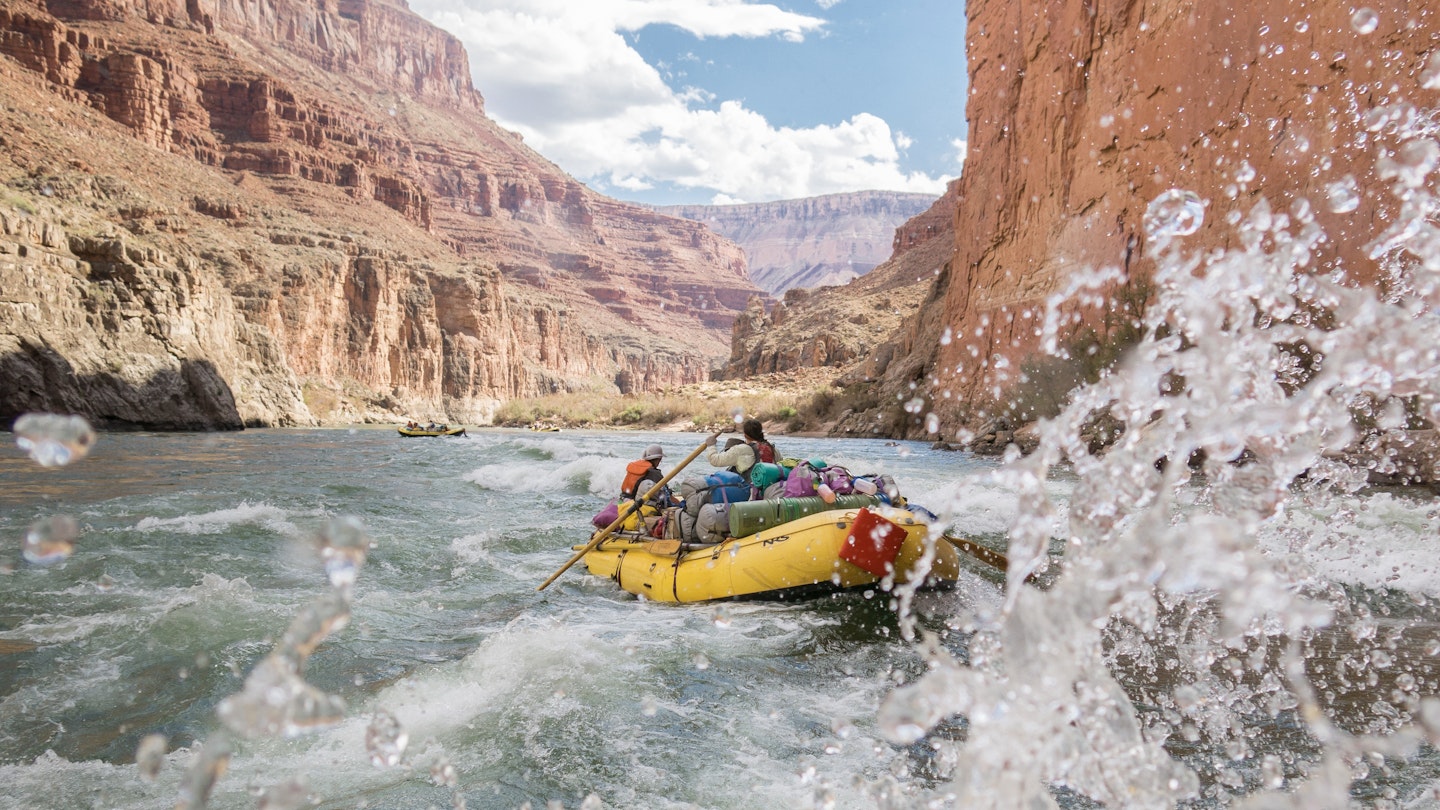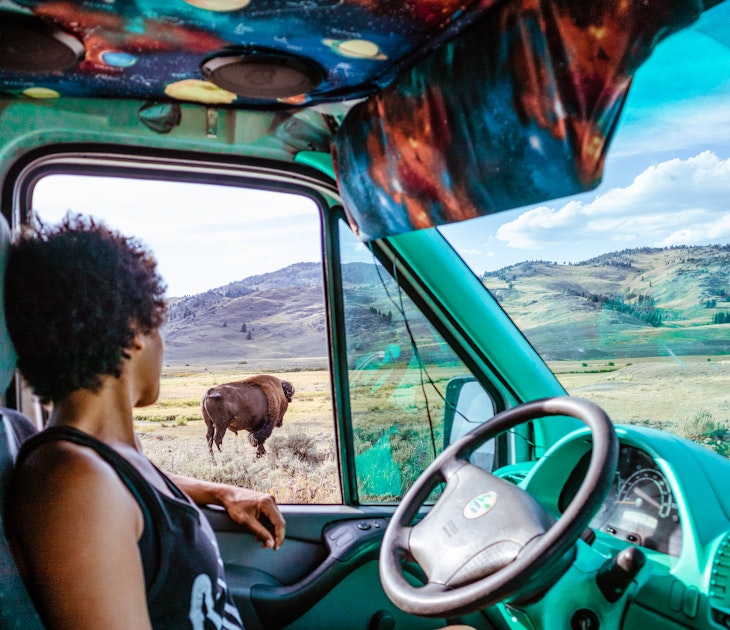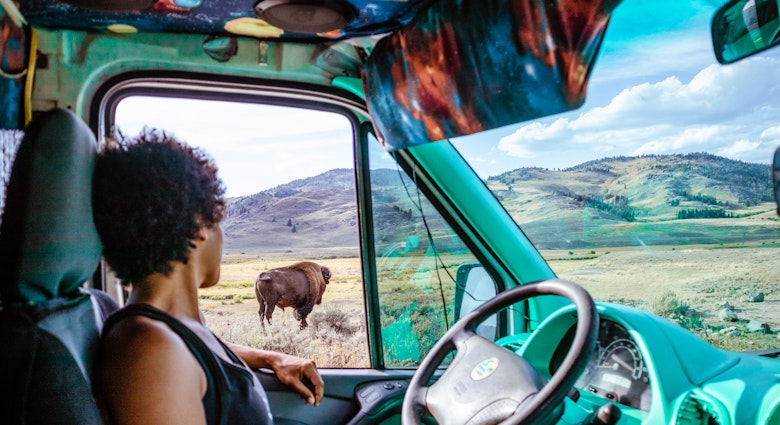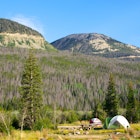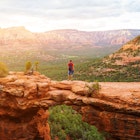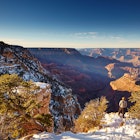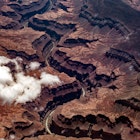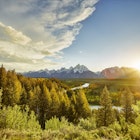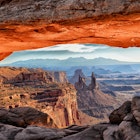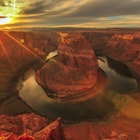At every majestic red, brown and pink turn, Grand Canyon National Park wows, with nature’s utmost beauty on full display.
The Grand Canyon is a global destination that offers more than 1.2 million acres of rocky, woodsy and riverine landscapes. It’s a paradise that appeals to travelers in search of many sorts of excursions, from family-centric outings to the most challenging of hikes.
Geologic forces have been molding this scenery for millions of years – and how you choose to take it all in, and which activities you opt for, will define your impression of this natural icon. The Arizona park features more than 130 trails, plus museums to explore, lodges to cozy into and water activities to enjoy.
Amid the many options, here are the top things to do in Grand Canyon National Park.
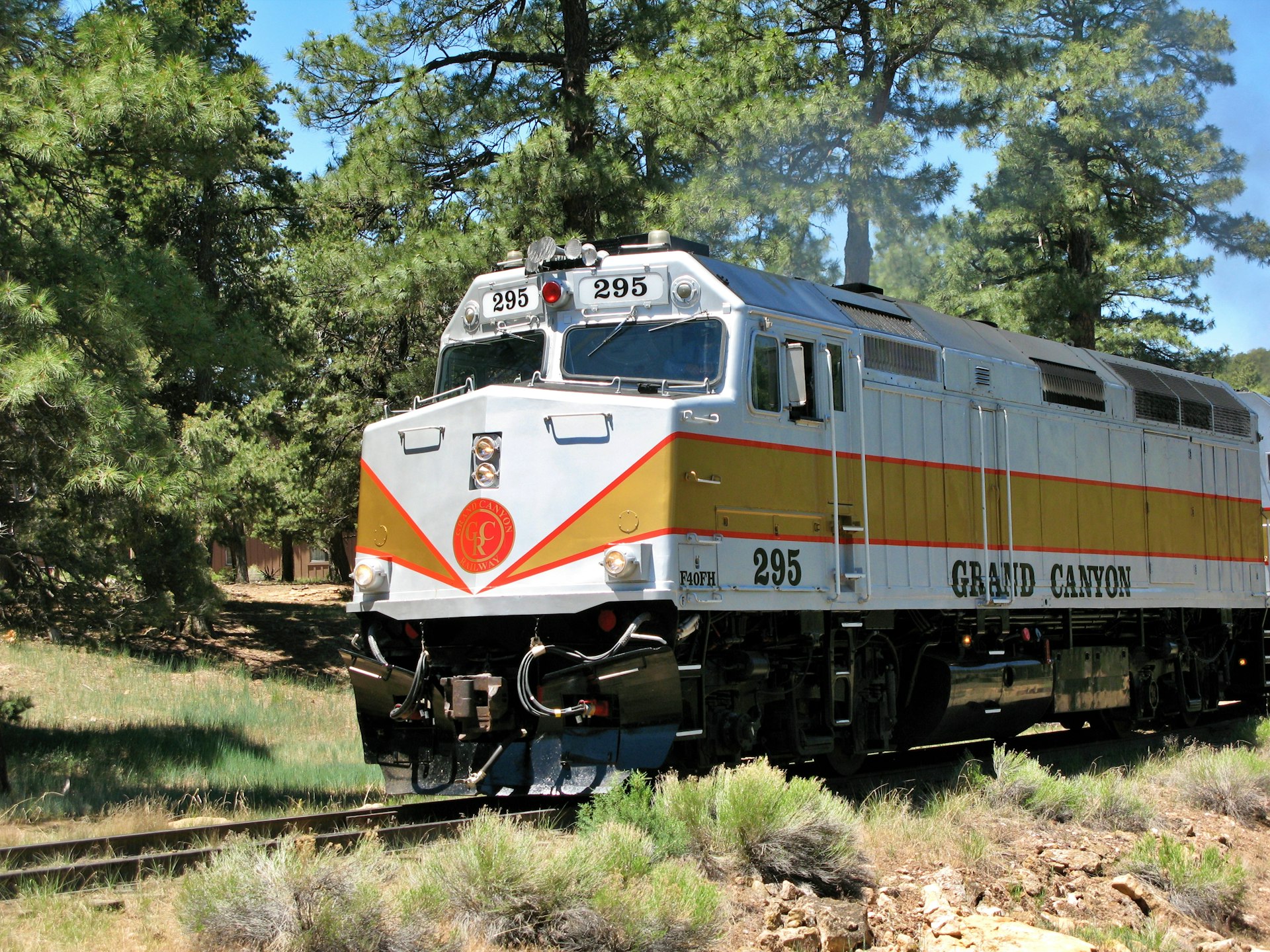
1. Take the train to the South Rim via Grand Canyon Railway
Getting to the Grand Canyon is half the fun. Sure, you can embark on a desert journey from Las Vegas via car, or weave through towering hardwoods en route from Flagstaff. However you choose to arrive, consider completing the last leg via the Grand Canyon Railway. With daily routes from Williams, Arizona – approximately 60 miles south of Grand Canyon Village – the railway provides the perfect hybrid of desert and forest landscapes. And it’s always a hoot onboard, with Western-inspired entertainment that the whole family will enjoy.
Planning tip: The train departs Williams at 9:30am daily and returns at 3:30pm (with the exception of November and December). This schedule leaves you approximately three hours and 45 minutes at the canyon.

2. Absorb the canyon’s majesty from several viewpoints
You can plausibly argue that every step in Grand Canyon National Park provides a memorable viewpoint. Yet a handful of lookouts within the park long the South Rim’s main drag (Desert View Dr / Rte 64) – easily accessible to all, and all with guardrails – truly stand out. These include the primed-for-a-sunset Mather Point, partially paved Mohave Point and Grandview Point, from which you can see a bend in the Colorado River below.
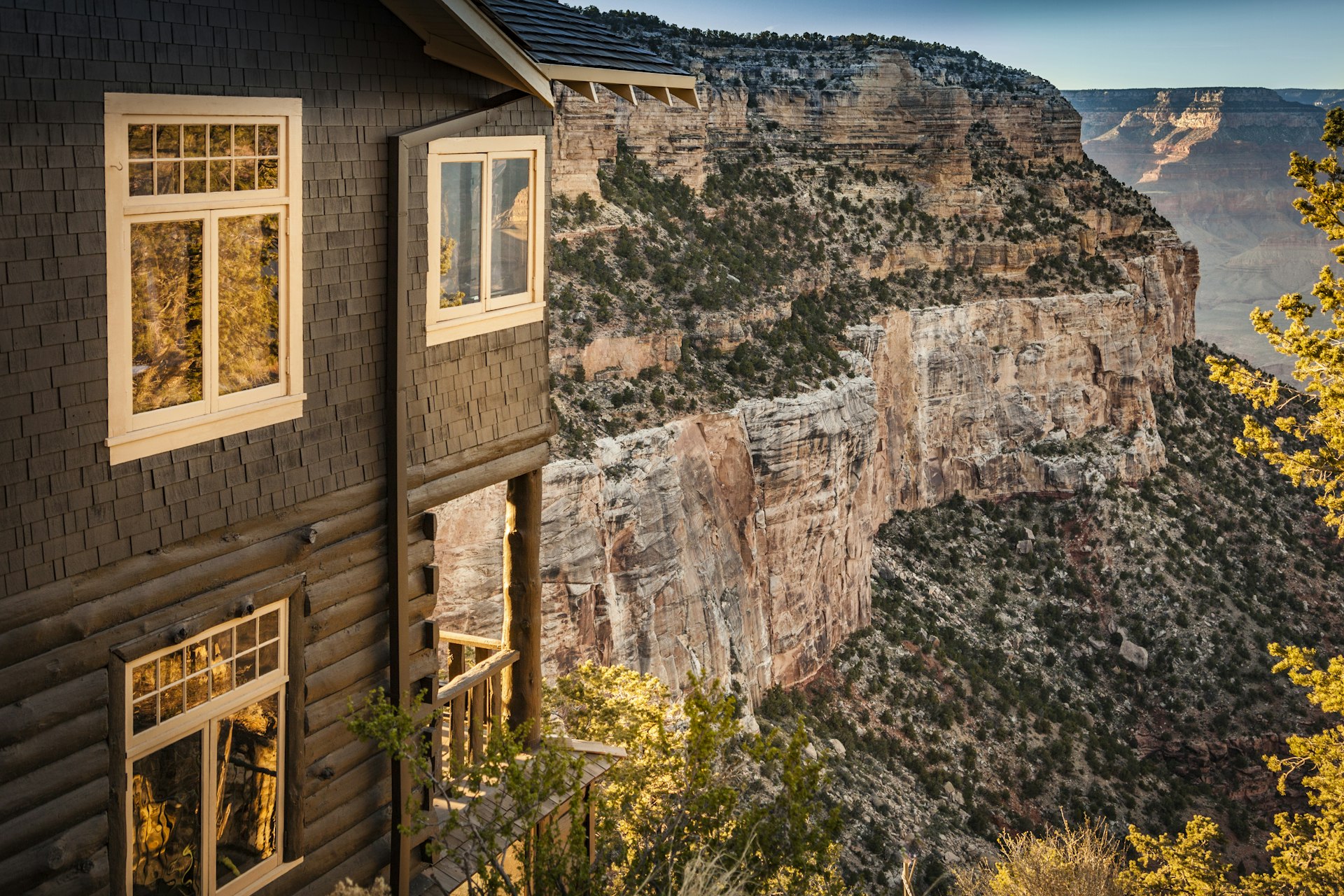
3. Admire landscape-inspired art at Kolb Studio
Grand Canyon National Park is a piece of art in itself, true – yet there is an actual art studio within its limits, too. Situated on a cliff along the South Rim, Kolb Studio was once a family residence and photo studio. Today, the multi-level cabin boasts vintage photos from its namesakes – brothers Ellsworth and Emery Kolb – as well as paintings and portraits of folks exploring the canyon’s acreage in times past.
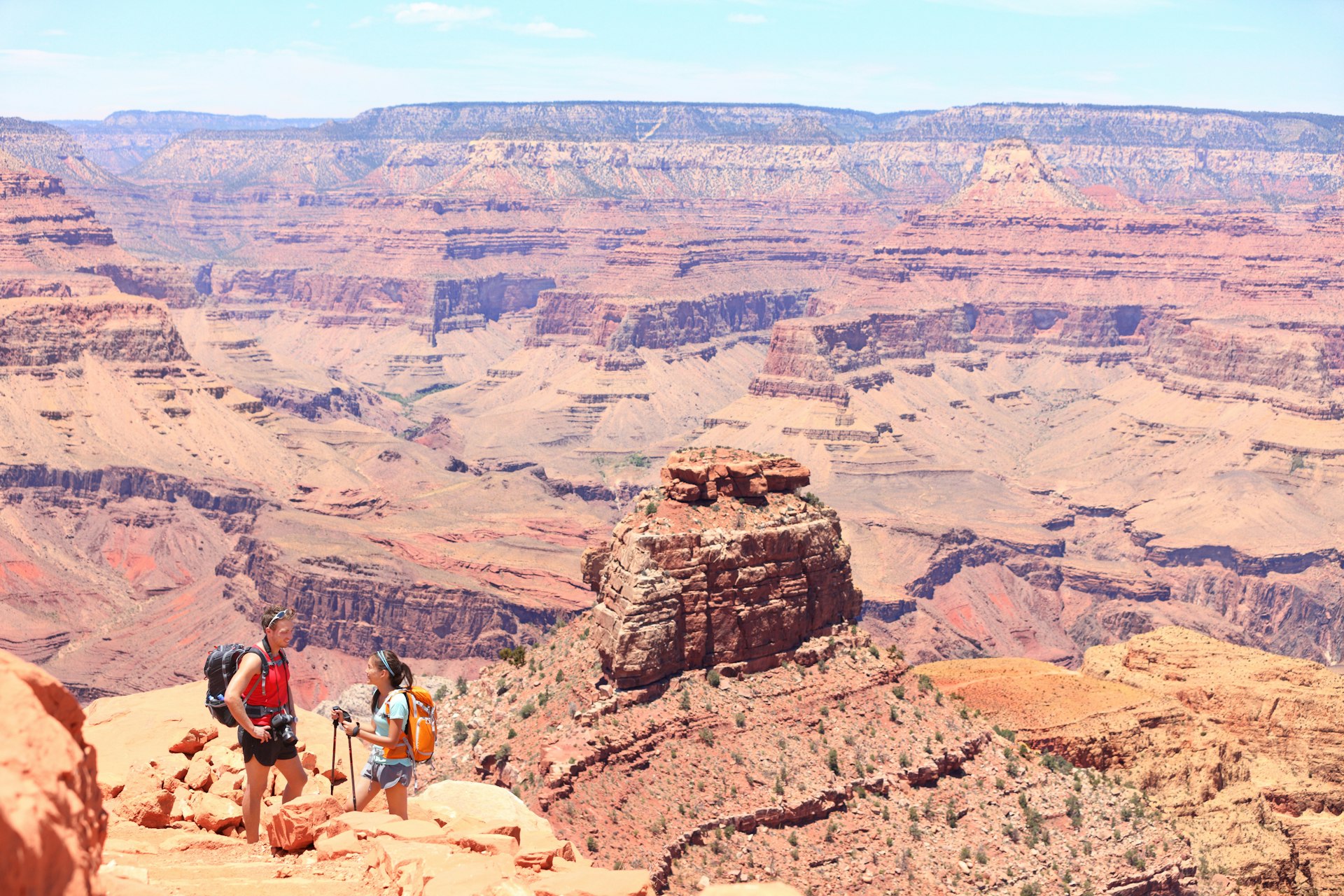
4. Take a hike along Bright Angel Trail or South Kaibab Trail
Once you lace up your hiking boots, everything from a death-defying, drop-filled, 11-mile jaunt (the Nankoweap Trail) to a flat straight shot to panoramic vistas (Shoshone Point) awaits. Yet the quintessential trails at the Grand Canyon – each containing a range of difficulties along them – are the nearly 8-mile Bright Angel Trail and the 6-plus-mile South Kaibab Trail. They’re both located in the South Rim, and provide stunning lookouts (such as Ooh Aah Point on South Kaibab) as they descend into the canyon.
Planning tip: The park is open 24 hours a day, 365 days a year, with its busiest hours from 10am to 4pm. Arrive early (or late) to avoid the crowds.
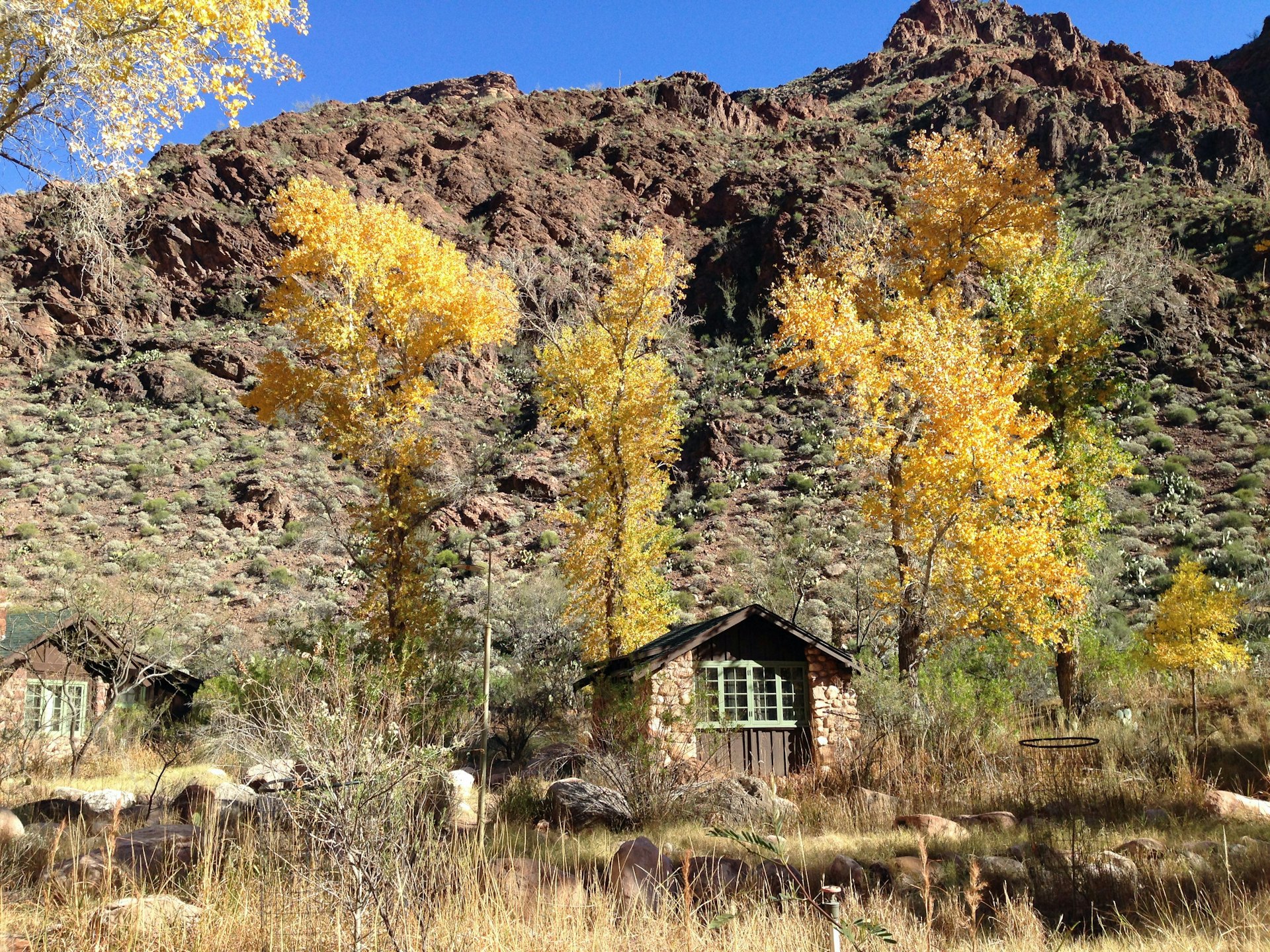
5. Check into Phantom Ranch or another woodsy in-park lodge
The only lodging option below the canyon rim, Phantom Ranch is nestled alongside Bright Angel Creek, just a half mile from the banks of the Colorado River. On its grounds, visitors can check into one of 11 cabins as well as single-sex dormitories. (Reserve early, as accommodations typically book up months in advance.) Beyond Phantom Ranch, a handful of above-rim lodges lie within the park, including the Maswik Lodge South, which opened in 2022; Charles Wittlesey-designed El Tovar; and the contemporary, cement-draped Kachina Lodge.
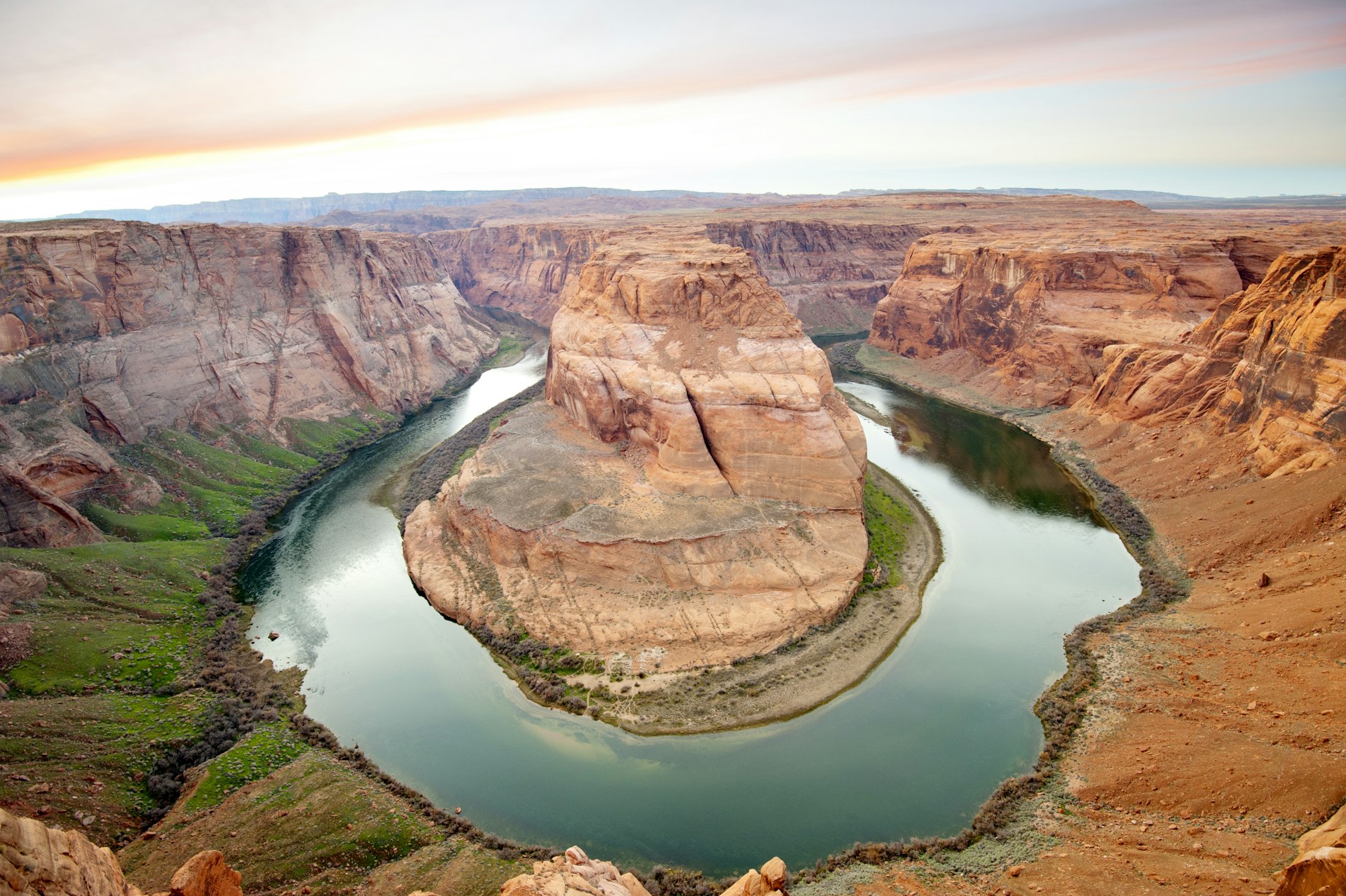
6. Kayak curvy Horseshoe Bend
You guessed it: Horseshoe Bend is sheer sandstone wizardry, sculpted by nature in the form of its namesake. Dipping more than 1000ft to the Colorado River below, the trailhead to this popular attraction is located just south of the town of Page. While the trail itself provides 1.2 miles of sweeping beauty, opt for a kayak adventure for a bottom-to-top perspective. Companies like Kayak Horseshoe Bend and Kayak the Colorado have the goods – and, if desired, the guides – to make it happen.
Detour: For more boating adventures, head 15 minutes north to Lake Powell, where operators like Lake Powell Boat Tours offer excursions.
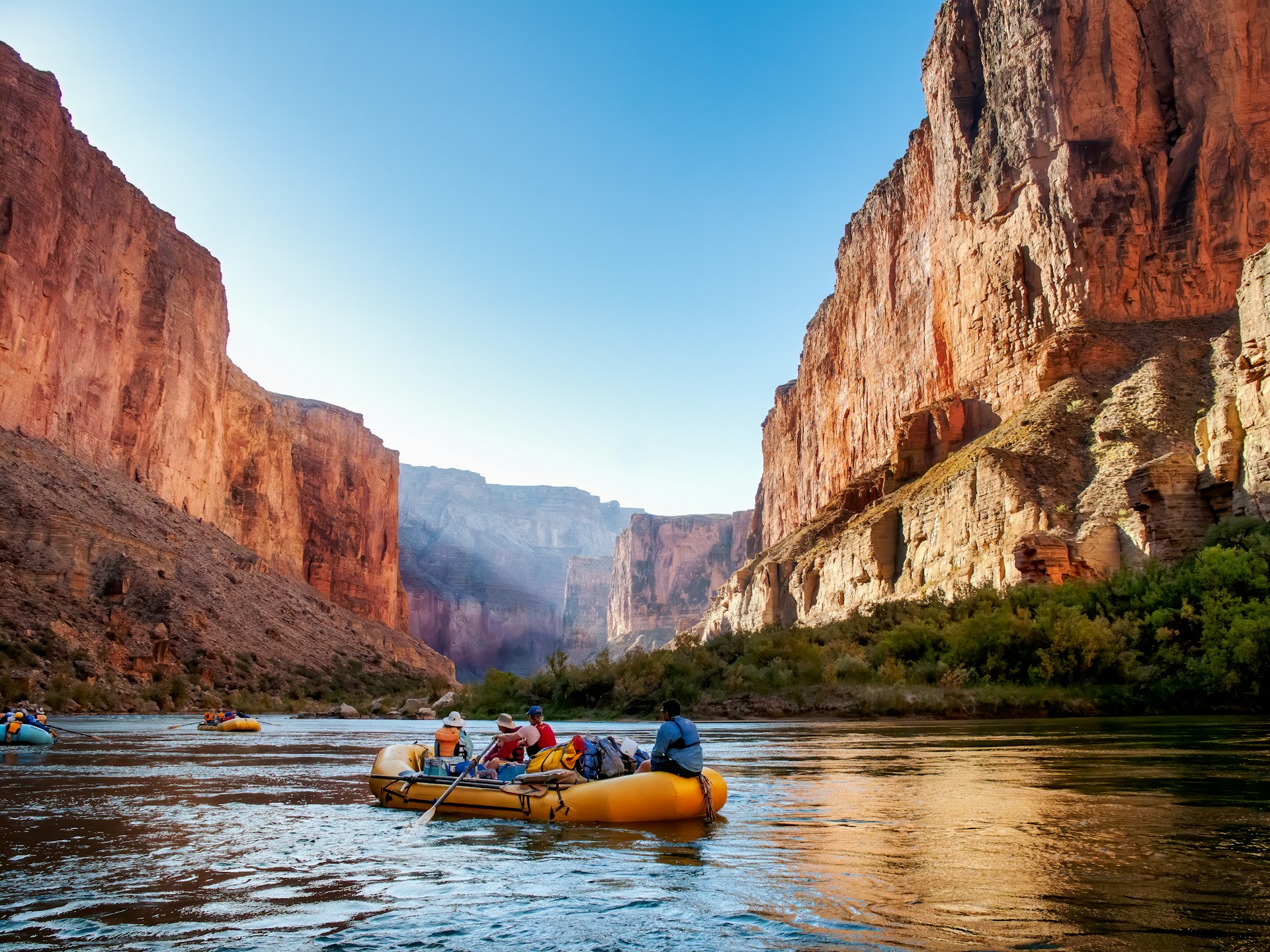
7. Go white-water rafting on the Colorado River
There are few things more refreshing than a hearty splash of Colorado River water after a trek through an often blazing-hot canyon. Go for more than just a quick dip and make a day out of it with a rafting trip. April through October are the best months for rafting, and companies like Grand Canyon Expeditions know exactly where to take thrill seekers and tranquil floaters alike.
Planning tip: Beyond half-day and full-day adventures, three- to five-day rafting and boating trips can take you to the canyon all the way from Las Vegas. Advantage Grand Canyon is a comprehensive site that has a list of all your rafting choices.

8. Take in layered vistas with a bike ride along the South Rim Trail
Between driving, hiking and strolling the viewpoints, add in a bike ride for a full canyon experience. Along the South Rim, a wonderfully paved, 13-mile route offers canyon vistas with every rotation of the pedals. Bikes and e-bikes are now permitted in the park; if you left yours at home, Bright Angel Bicycles and GC-Bikes are tucked near the rim in Grand Canyon Village, with offerings for both adults and kids.
Local tip: When you tire, the park’s shuttle-bus system has bike racks. The shuttle stops almost every mile of the 13-mile stretch, and runs every 15 to 30 minutes.

9. Don’t forget a North Rim excursion
The bulk of the Grand Canyon’s buzziest spots – Bright Angel Trail, Desert View Watchtower and the Trail of Time being among them – are found at the South Rim. But let’s not forget the generally more remote and less developed North Rim. Some of the best viewpoints in all of this part of the Southwest are to be found here, including Cape Royal and Point Imperial.
Planning tip: The North Rim is open May 15 through December 1 annually, and is otherwise closed to vehicular traffic.

